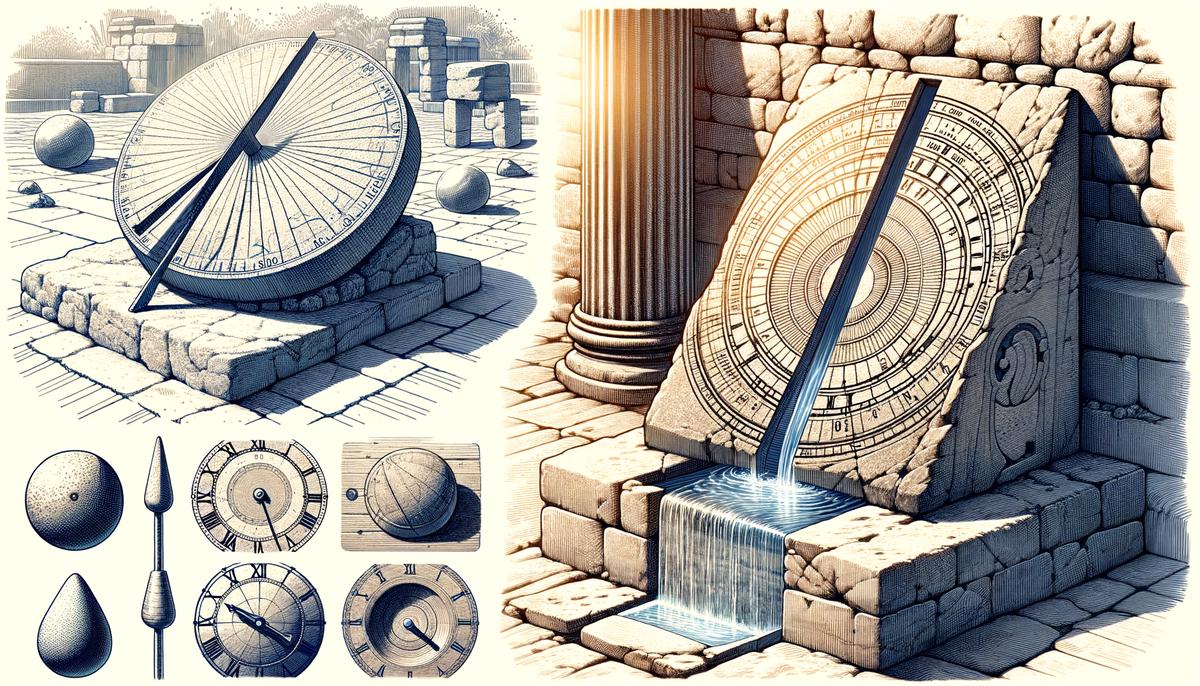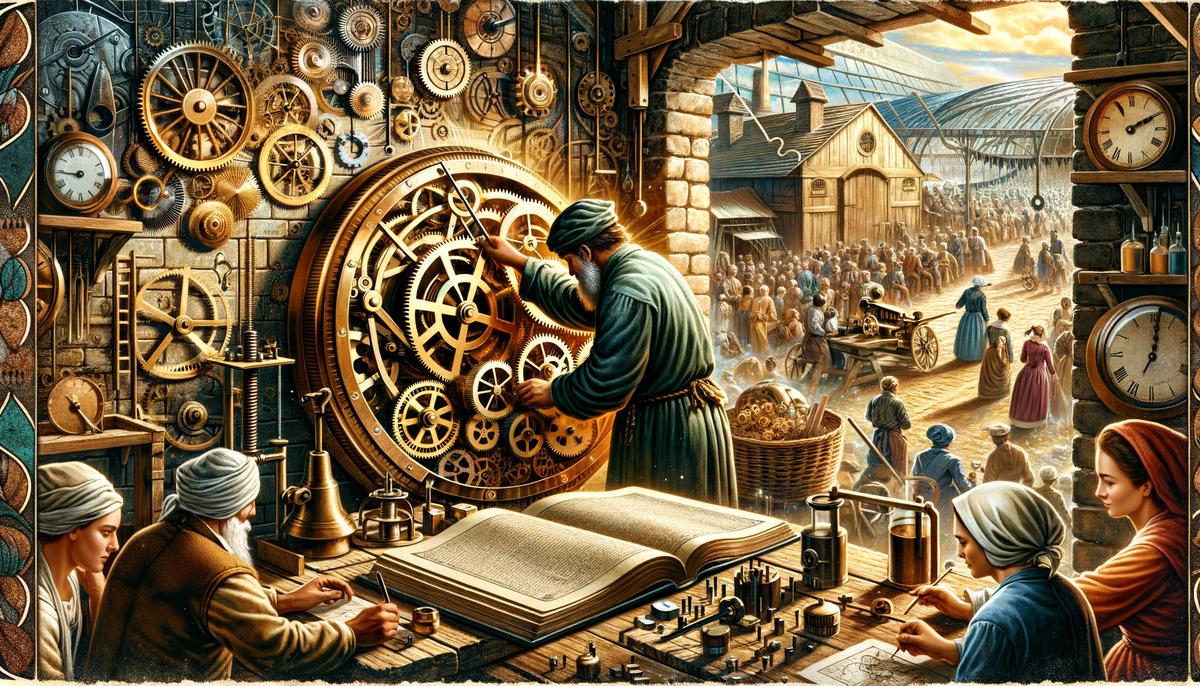From the earliest days, humans have been fascinated by the concept of time. This curiosity sparked a quest to measure and understand time’s passage, leading to innovations that have shaped our daily lives and societies. As we explore the evolution of timekeeping, from ancient sundials to modern atomic clocks, we uncover a story of ingenuity and the relentless pursuit of precision. This narrative not only highlights our achievements in measuring time but also reflects on how these advancements have influenced human civilization.
The Dawn of Timekeeping
Humans have always been innately driven by curiosity and necessity to understand and measure the passage of time. The invention of early timekeeping devices emerged from this deep-rooted desire, intertwined with the fundamental needs of daily life, agriculture, and religious observances. Before the advent of modern clocks, ancient civilizations such as the Egyptians and Babylonians keenly observed the patterns of the sun, moon, and stars. These celestial bodies served as their guide for delineating day from night and tracking the change of seasons, crucial for agricultural activities and religious events.
The earliest known timekeeping devices, sundials and water clocks, were born out of the need to organize and plan daily activities more effectively. Sundials, dating back as far as 1500 BC in ancient Egypt, relied on the sun’s shadow cast by a gnomon to indicate the time of day. This innovation allowed people to measure time during daylight hours with a fair degree of accuracy. Similarly, the water clock or clepsydra, which measured time through the regulated flow of liquid from or into a vessel, enabled timekeeping at night and during cloudy or overcast days when the sun’s shadow was not visible. These inventions underscored humankind’s evolving relationship with time, marking a significant leap forward in our ability to measure and manage our most precious resource. These rudimentary yet ingenious devices laid the foundational principles for the complex timekeeping mechanisms we rely on today, showing the timeless human quest to understand and harness the flow of time.

The Evolution of Mechanical Clocks
As humanity progressed through the ages, the development of mechanical clocks marked a seismic shift in the way people organized their lives and understood time itself. This revolutionary advancement emerged in Europe during the 14th century, a period bustling with innovation and a thirst for precision. The mechanical clock was unlike anything that had come before it. By harnessing gears, weights, and later, spring mechanisms, these clocks were capable of tracking time continuously, without the need for sunny days or constant attention. They brought an unprecedented level of accuracy to timekeeping, making it possible to divide the day into equal, predictable hours regardless of the season. This newfound precision was a game-changer for society, impacting everything from navigation to the scheduling of daily work and prayer.
The ripple effect of the mechanical clock’s invention was profound. With the ability to keep consistent and accurate time, communities became more synchronized. This synchronization facilitated the coordination of trade, informed the scheduling of trains in the burgeoning rail systems, and empowered scientists to conduct experiments that required precise timing. Perhaps one of the most significant impacts was on the realm of social organization; the mechanical clock laid the groundwork for the regimentation of daily life into schedules and appointments, a concept so deeply ingrained in contemporary society it’s hard to imagine life without it. As these ingenious devices evolved, adding features like the minute hand during the 16th century, their influence only grew, cementing their role as indispensable tools in the march of civilization. Their introduction served as a testament to humanity’s enduring ingenuity and its relentless pursuit to measure and manage the passage of time with ever-greater clarity and precision.

The Modern Era of Timekeeping
As the waves of time continued to flow, the innovations in timekeeping advanced with astonishing leaps, shaping the very fabric of modern society. The leap into electronic timekeeping in the 20th century marked one of these profound shifts. The introduction of quartz clocks in the 1920s leveraged the consistent vibration of quartz crystal when subjected to electric current, bringing unprecedented accuracy to the field of timekeeping. This fusion of electricity and crystal precision allowed for a level of consistency in time measurement that mechanical clocks could never achieve. It wasn’t just the accuracy that changed; it was also the size and usability of clocks. Timekeeping devices became smaller, more portable, and significantly more reliable, embedding themselves seamlessly into daily life, from wall clocks in households to the wristwatches we carry everywhere we go today.
Yet, the quest for even more precise timekeeping doesn’t pause. Enter the atomic clock era in the mid-20th century, utilizing the consistent oscillation of atoms as their timekeeping element. Atomic clocks, especially those using cesium or rubidium, redefine our understanding of precision, losing only a second over millions of years. This extraordinary accuracy has implications far beyond what ancient timekeepers could have imagined, touching everything from GPS satellites orbiting Earth to the fine-tuning of telecommunications networks. These advances exemplify humanity’s relentless pursuit of perfection in timekeeping, empowering us not just to mark time but to synchronize global activities with a preciseness that was once deemed unattainable. Atomic clocks have thus become the golden standard in global time regulation, reinforcing our continued fascination and dedication to mastering the concept of time. Through these innovations, modern timekeeping elucidates not only our capability to innovate but also our never-ending desire to bring order and understanding to the seemingly unfathomable flow of time itself.

The journey through the history of timekeeping reveals more than just technological progress; it showcases humanity’s enduring spirit to master the world around us. The transition from observing celestial bodies to developing atomic clocks underscores a remarkable capacity for innovation and adaptation. As we stand today with tools that can measure time with astonishing accuracy, it is clear that our fascination with understanding and organizing time has profoundly shaped both our past and will continue to influence our future. Through these developments in timekeeping, we gain not just seconds or hours but a deeper appreciation for humanity’s place within the vast tapestry of existence.
Writio: Your AI content creator. This content was crafted by Writio.
Leave a Reply